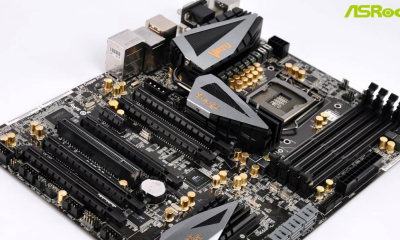Guide
6 Best Ways To Test Audio Equipment
Audio equipment plays a vital role in recording, reproducing, and enhancing multiple types of sounds. Typically, this gear is necessary for every concert, recording studio, conference room, and bar to produce audible and appropriate sound. Examples of this equipment are amplifiers, mixing boards, studio speakers and instruments, and microphones.
Suppose you’ll work in a sound engineering department or its related fields. In that case, you may need to know how to test audio equipment in order for you to learn how to mix and adjust volumes to produce pleasing sounds. In addition, assessing audio equipment quality is said to aid you to recognize if the equipment has performance issues and the like.
Here’s a post to help you properly diagnose the quality of your audio equipment via testing. Read on to learn more.
1. Use An Audio Frequency Analyzer
Audio analyzers are the go-to options if you want to check the quality of your audio equipment. Specifically, they quantify audio performance. You may use an audio frequency analyzer in various applications and devices as well.
In most cases, the audio analyzer compares the baseline and output sounds. Typically, they refer to a model sound and try to emulate it by arranging and mixing the characteristics. Since audio analyzers feature digital graphs or presentations, you’re presented with a precise measurement of the sound quality in real-time in an easy-to-comprehend format.
For better recording or sound production, you may consider choosing among the following:
- Analog
Analog analyzers employ manual measurement of sound quality with suitable analog hardware. Most analog types are less expensive and produce more natural, in some cases, raw sounds. However, it may require skills to use it properly.
- Digital
This type utilizes digital signaling processing, making it easy to monitor and analyze the sound. In most cases, it produces precise and high-quality sound results. On the other hand, it’s more costly and has better features, such as noise reduction.
- Converted-Based
This type analyzes digital signals using digital-to-analog and analog-digital converters.
If you’ll be using an audio frequency analyzer for the first time, you may need to know and immerse yourself with the different sound metrics, including:
- Noise
This may refer to the sound energy related to the input signal.
- Harmonics
This could refer to the overtone associated with the fundamental sound of an audio piece.
- Gain
The gain in audio refers to the difference between the input and the output as the result of amplification.
- Level
This may refer to the combined audible vibrations, sound exposure, and sound power level.
- Frequency Response
This refers to the range of musical tones a device can produce.
2. Try Out An Audio Testing App Or Software
Today, you may test your audio equipment by connecting it to an app and milliliter jack. Then, you can evaluate the sound it produces with the app’s features. Many of these apps can instantly diagnose your equipment’s existing issues just by looking at the immediate results.
The upside of using an audio testing program is its portability and quick results. In many cases, you could just evaluate the equipment even if you’re on a ride and run diagnostics without carrying bulky weight. In fact, you may do the diagnostics with just a smartphone or a gadget on most occasions.
For the best results, you may need to know about and practice the combination of the following:
- Frequency
This refers to how many times a sound wave repeats itself. For example, sounds produced by drums have a lower frequency than flutes.
- Wave Form
Generally, this refers to how sound waves move over time. Some waveforms may be extending and big while others are short.
- Amplitude
This refers to the distance between the maximum displacement of a wave and its resting point.
- Tone Color
Also known as tone quality, this refers to the characteristics of a particular sound compared to others. For example, a violin may produce a ‘bright’ sound while a cello has a ‘mellow’ sound.
- Dynamics
This refers to the difference between the softest and loudest of sounds.
3. Manually Check Audio Quality With Other Devices
Testing audio equipment using other devices could be more laborious and require the necessary skills to set the tone of the equipment literally. You may need to learn about fixing and adjusting frequencies, using reverb bus, and enhancing with sound compressors. And you may need to repeat the process repeatedly to have a reliable diagnosis.
In addition, this process may need you to prepare a complete audio system, including sound synthesizers, mix boards, amplifiers, and speakers. Today, most of these are also connected to computers for further monitoring of sound production and quality.
If you’re evaluating speakers, you may need to try both the mono and stereo functions. You may run a bass and treble test if you’re checking dynamics. To boot, you may maximize your equipment or system’s sound to see the high-range capability of the equipment. In doing so, you may consider soundproofing your room and using headphones for your ear’s safety.
The good side about manual checking and the use of other audio devices is you produce real-time results. The downside is it could be more time-consuming. Yet, since you can listen to the sound right in front of you without assistance from analyzing software, you may simply make the necessary changes.
4. Utilize Stereo Test Tracks
Basically, a stereo test track refers to playing specific songs to know how well the equipment produces sounds. In most cases, this technique is used to assess the performance of the equipment or an audio set. Before trying the stereo test, you may also consider checking the mono test for the equipment to focus only on the sound basics before proceeding to the advanced setup.
Audio enthusiasts may select a specific part of the tune or mix or prune the audio files to know how the equipment performs. What’s good about stereo test tracks is you can see the extreme capabilities of the equipment. It may also help you adjust the equipment if it doesn’t meet the standards you’re looking for.
For some ideas of what audio files to play, here are some of the options you may try:
- Toto’s Rosanna
This song is the most suitable if you’re looking for tonal balance. It may also be a perfect choice to check your equipment’s treble and bass.
- Mötley Crüe’s Kickstart My Heart
Generally, this song will help you test the equipment’s maximum output capabilities. Since it requires dynamic compression, it’ll also evaluate bass performance.
- Olive’s Falling
Since this song has powerful bass drops, it’ll help you notice bass line performance and the dynamics of your equipment. It may also check the middle and treble quality of the equipment.
- Saint-Saëns’ Symphony No. 3’s Organ Symphony
This could be the best song for evaluating bass quality. It contains booming and deep bass notes that showcase how well the equipment fares through extreme sounds. In some cases, playing this song full-blast may destroy small woofers.
5. Examine Sound With A Pair Of Top-Quality Headphones
Using headphones or earphones is said to be another reliable way of evaluating the quality of audio equipment. Typically, these devices can provide a clear and well-defined sound one can assess. If you’re judging the equipment’s sound quality, you may start playing low-frequency sounds to see if the equipment can produce low-frequency yet audible sound.
Then, you can try the different sound features of bass and treble. To listen to high-pitch sounds, you may increase your headphone’s volume. You may use a microphone to see the quality of raw and processed sounds. Also, you can try to listen to sounds produced by the equipment when particular audio devices, such as woofers, are attached to it.
In choosing headphones or earphones, you may choose between over-ear and on-ear types as they can produce clearer sounds because of better attachment. Consider various features, such as noise reduction and amplifier-readiness, as well.
6. Try Double-Blind Listening Tests
In this method, you may need the help of another person to evaluate the equipment you’ve already checked. You may also act as the organizer of the listening test and seek the help of two persons to assess the equipment. Then, you compare their findings. The shared information they observe could be declared as the results of the sound quality test.
In considering this option, you may just need to refrain from divulging any information about the equipment, such as brand, features, and attachments. For this purpose, you may place the invited people in a soundproof room. They’ll only listen to the sound produced as you arrange and operate the equipment.
You may also give the aspects and elements of sound quality you’re planning to evaluate, such as dynamics, bass and treble performance, sound mixing quality, and pitch capabilities. Continuing on, you may ask them to write suggestions and recommendations on improving the equipment’s sound quality.
Wrapping Up
Testing a piece of audio equipment can be challenging. Fortunately, seasoned or newbie audio enthusiasts can utilize some devices and software to assess the sound quality of their devices accurately and effectively. Suppose you’re planning to check audio equipment anytime soon. In that case, you may read the insights mentioned above and choose from among the different methods of testing audio equipment.
Further, connect and talk with a number of veteran audio enthusiasts or engineers about their approaches to audio equipment testing. You can join online communities or subscribe to blogs about audio devices and the like for more ideas too.
-

 Android6 years ago
Android6 years agoEnergizer Power Max P18K Pop – Battery Life for Days
-

 News2 years ago
News2 years agoAsus Introduces the Pro WS W790E-SAGE SE, a Motherboard for Xeon W-3400/2400 EEB Processors
-

 Blog4 years ago
Blog4 years agoWhat GPU is Best to Mine Metaverse in 2022
-

 Apple3 years ago
Apple3 years agoHow to Disable and Deactivate iMessage on iPhone or iPad










